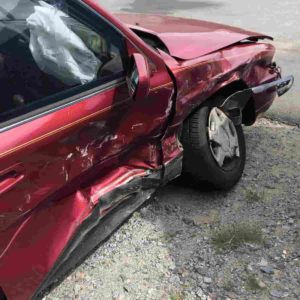You shouldn’t have to pay for an accident you didn’t cause. But, if you don’t have uninsured or underinsured coverage, you may have to. Standard liability car insurance covers your expenses if you hit another driver. If you’re hit by a driver without insurance, however, things get a little more complicated. Uninsured and underinsured motorist coverage come into play when the driver at fault does not have sufficient insurance to cover the damages, or if you are injured in a hit-and-run accident.
What’s the Difference Between Uninsured and Underinsured Coverage?
Uninsured motorist insurance covers you when the driver at fault doesn’t have any liability coverage. In the past, the issue of who pays for repairs and medical bills would have been settled in court via a personal injury claim or lawsuit. However, most people who can’t pay for car insurance also can’t afford to pay a personal injury settlement. For this reason, many states have started to require all drivers to carry uninsured motorist coverage to avoid putting people in debt after a crash.
Underinsured motorist coverage kicks in when the at-fault driver has insurance, but their plan won’t cover all of the necessary expenses. Most basic liability insurance can’t take on the entire cost of a crash, especially with rising health care and auto body repair costs.

The minimum required liability coverage limits are rarely enough to pay for all the damages caused in a major accident.
So, How Do These Policies Work?
If you were in a crash caused by another driver, the first thing you should do is get the insurance information from the at-fault driver. Even if you’re not sure who was at fault, it’s essential that you get this information.
If the other driver does not carry insurance, your uninsured or underinsured motorist coverage will kick in to cover the damages. This way, you won’t be liable for any out-of-pocket costs related to your accident except for the deductible and any amount of damages that exceeds your UM policy limits.
States Where Uninsured Motorist Coverage Is Required
Uninsured and underinsured motorist policies are optional add-ons in many states, meaning this coverage is not included in your standard car insurance policy. However, some states now require drivers to purchase UM coverage, or they require every insurance company to offer UM coverage, and you would have to reject it in writing if you wish to do so. States with some version of this law include:
- Connecticut;
- District of Columbia;
- Illinois;
- Kansas;
- Maine;
- Maryland;
- Massachusetts;
- Missouri;
- Nebraska;
- New Hampshire;
- New Jersey;
- New York;
- North Carolina;
- North Dakota;
- Oregon;
- South Carolina;
- South Dakota;
- Vermont;
- Virginia; and
- West Virginia.
Do You Really Need Underinsured and Uninsured Coverage?
Did you know that the average minor car accident costs drivers without insurance a little under $1,000? Crashes considered moderate or major typically cost closer to $5,000. If you have insurance, however, it’s rare for out-of-pocket costs to raise above a couple hundred dollars. If you consider the fact that more than half of all drivers will be involved in a crash at least once, investing in UM and UIM coverage is a no-brainer.
